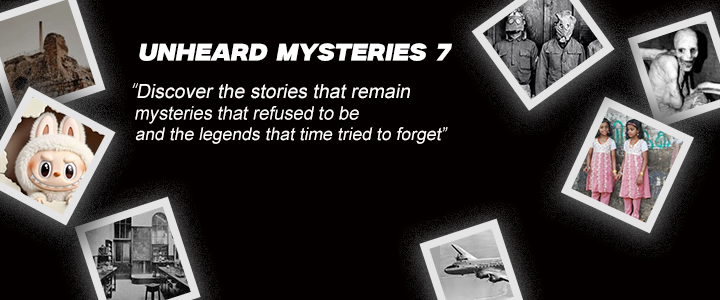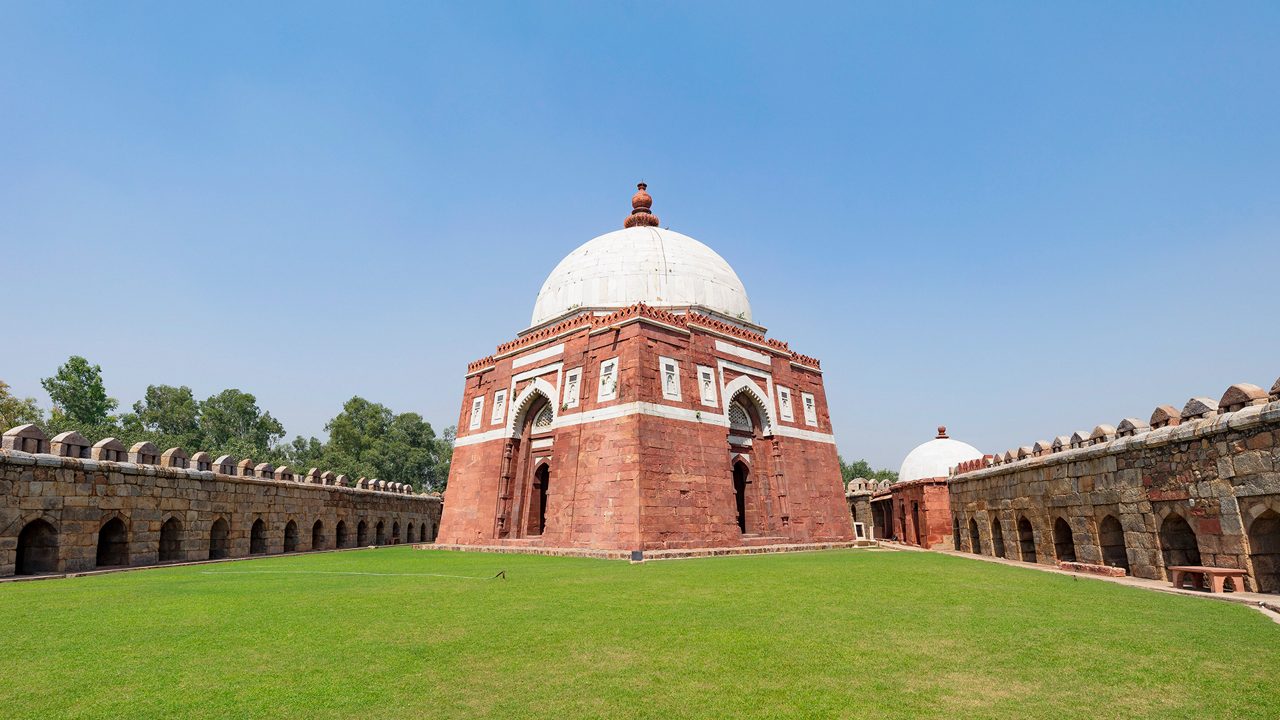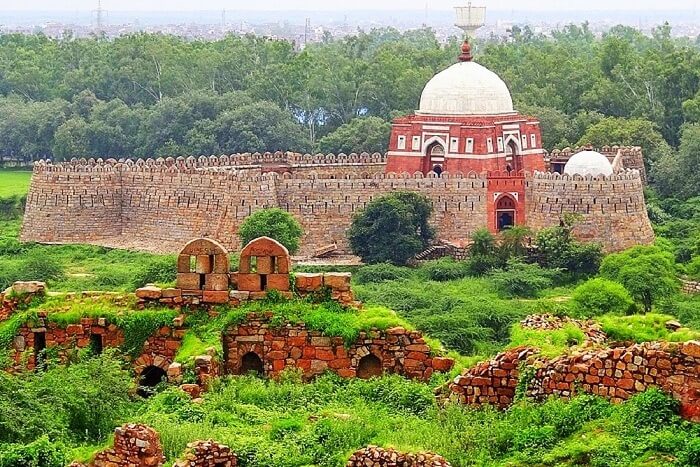Unheard Mysteries of Tughlaqabad Fort
The Tughlaqabad Fort is a massive ruin that sits in the shadows of the chaos of contemporary Delhi and is surrounded by the sand and dust of stories that have passed.
The fort is now beyond comprehension, built to withstand both invaders and time itself. The walls that once resounded with royal command are now silent and eerie.
The ruins seem to come to life as the sun sets, not with stories from the past but with hints of something more sinister.
The Tughlaqabad Fort is not your typical ruin. From its inception, it is said to have been cursed, possessed, and doomed. But how much of this is simply fiction? And what truths are concealed within its imposing walls?
Tughlaqabad Fort History
A forgotten fortress known as Tughlaqabad Fort, Tughlakabad, New Delhi, Delhi 110044, can be found hidden among the ruins.
This location is so steeped in mystery, betrayal, and curses that it almost appears as though the earth itself is refusing to allow it to exist.
The majority of books on history will tell you who built Tughlaqabad Fort—Ghiyas-ud-din Tughlaq, founder of the Tughlaq dynasty, in 1321 as a strong defense against Mongol invasions.
However, the fact that the fort’s foundation was cursed even before the first stone was laid is not mentioned.
The Foundation of Tughlaqabad Fort
The year was 1321. Ghiyas-ud-din Tughlaq envisioned a fortified city that would rival anything built before.
He chose a desolate hillock in southern Delhi and ordered a massive stone fortress to be erected at lightning speed—a place that would be both his capital and his legacy.
Stretching over 6.5 km, the fort was encased in 10–15-meter-thick stone walls, topped with battlements and bastions.
Its construction was swift—so swift, in fact, that it drew the ire of a man who would change its fate forever.
The Curse of Nizamuddin Auliya
Legend says that Nizamuddin Auliya, a well-known Sufi, was building a baoli (stepwell) nearby at the same time.
The saint cursed the building when the Sultan sent all workers to his fort:
“Ya Rahe Ujar, Ya Base Gujjar”
(Let it remain barren, or be occupied by shepherds).
The curse was viewed by many as nothing more than anger, but history seemed to follow it.
In 1325, Ghiyas-ud-din mysteriously passed away after being crushed under a pavilion during a reception that his own son, Muhammad bin Tughlaq, had planned.
The fort was abandoned shortly thereafter, and Gujjar shepherds moved in. The city of ambition was left to ruins.
Paranormal Activities at Tughlaqabad Fort
Centuries later, Tughlaqabad remains mostly uninhabited.
Local tales speak of unnatural happenings within its walls after sunset. Guests report abrupt decreases in temperature, voices in the distance with no source, and a strong sense of being watched.
-
Old armor-clad apparitions have been spotted from afar before vanishing.
-
Animals act erratically near certain parts of the fort.
According to Delhiites and investigators of paranormal activity, the Tughlaqabad Fort location takes on an inexplicable ominous quality after dusk.
The Tomb of Ghiyas-ud-din Tughlaq
The Tomb of Ghiyas-ud-din Tughlaq is located across a causeway from the southern fort wall.
This architectural masterpiece, built of red sandstone and marble, is enclosed within fortified walls. The odd thing? No birds fly above the tomb.
Some believe it is because of a geomagnetic anomaly. Others say it’s the effect of the Sufi curse.
According to local legend, the Sultan was denied peace in both life and death for wronging a saint. His spirit is believed to roam endlessly between the tomb and the fort.
The Vanishing Tunnel
It is believed that the fort was once connected to the Qutub complex by an underground tunnel.
Some say it extended even further, allowing kings to escape during sieges. But strangely, the tunnel has mysteriously disappeared.
Modern excavations haven’t uncovered its path. Shepherds in the 19th and 20th centuries told stories of people who entered and never returned.
Whispers suggest it was a portal to another dimension—or perhaps the realm of the Jin, spirits from Islamic mysticism.
The Lost Tribes and Dark Rituals
In the late 1800s, occult rituals reportedly took place in the fort’s chambers.
Tantric ceremonies were said to awaken ancient spirits, invoke power, or even try to lift the curse.
There are also tales of “The Lost Tribe of Tughlaqabad,” people who never left the cursed fort. They supposedly live in hidden underground chambers, speak a lost dialect, and perform rituals to protect the fort’s spirit.
While no hard evidence exists, explorers sometimes discover:
-
Sealed staircases
-
Strange symbols carved into walls
-
Ritualistic stone circles
These suggest that the ruins are still being used—for something unknown.
A Fort That Resists Time
Despite being an Archaeological Survey of India-protected monument, Tughlaqabad Fort remains strangely under-visited.
Unlike other Delhi tourist destinations, it lacks facilities and restoration. It’s almost as if the city itself wants it forgotten.
Drone photographers report strange interference when flying near the tomb. GPS devices malfunction, and even Google Maps often fails to mark internal chambers.
In 2019, a paranormal research team recorded:
-
EMF fluctuations
-
Equipment malfunctions
-
A thermal image of a figure on the battlements
Even today, the fort resists being fully understood.
Visiting Tughlaqabad Fort
So, what exactly is Tughlaqabad Fort like today? A saint’s curse? A betrayed king’s spirit? Or just echoes of ancient violence?
The fort is open to visitors during daylight hours.
-
Tughlaqabad Fort entry fee: ₹25 (Indians), ₹300 (foreigners)
-
Nearest metro station to Tughlaqabad Fort: Govindpuri Metro Station (Violet Line)
-
Tughlaqabad Fort was built by Ghiyas-ud-din Tughlaq in 1321
Entry after sunset is prohibited—not just for safety, but out of respect for beliefs. If you go, wear sturdy shoes, carry water, and keep your mind open.
But linger near sunset, and listen carefully. The wind may carry more than air. It may carry warnings.
Conclusion
The Tughlaqabad Fort is not just a ruin, but a lesson in arrogance—where spiritual power prevailed over political ambition.
Haunted or not, its shadows and silence still tell unspoken tales. It remains a dominating relic, majestic but lifeless.
By day, it is a ruinous masterpiece. By night, its walls may start watching back.
Perhaps Tughlaqabad wasn’t abandoned by history—it was told to leave.
Disclaimer
Although Tughlaqabad Fort in Delhi is associated with ghost tales and legends, it is also a site of history.
Some believe in hauntings and curses, but these are not scientifically proven.
This blog shares both the fort’s mysteries and history, not to spread fear but to highlight cultural heritage and folklore.




